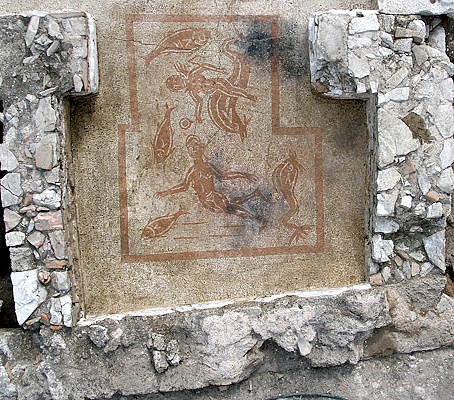Discovering Tadinum and its Archaeological Area
The history of the ancient town of Tadinum begins in the 2nd century B.C. in the Republican period of Rome. The area was inhabited from very remote times (with finds dating back to the 13th century B.C.) by the Tarsinater people, one of the primitive Umbrian populations mentioned in the Iguvine Tablets. With the construction of the Via Flaminia, the ancient settlement in the hills was abandoned and the Tarsinater settled in the plains, in a bend of the Rasina stream, near the route of the new road. The choice was unfortunate in the long run, as the town was destroyed by the Visigoths in the early 5th century A.D. in their descent towards Rome along this very consular road.
The area, however, continued to be inhabited. In Longobard times, it is mentioned as “Wald Tagina” (from “wald”, which means “wood” in German), then as “Taino” in the medieval Gregorian cadastre, up to today’s Gualdo Tadino.
Thanks to several excavation campaigns carried out by the Superintendence for Archaeological Heritage of Umbria in cooperation with the University of Perugia, the Roman town was unearthed and can once again be visited in a vast area covering about 5000 square metres that contains evidence of seven centuries of Umbrian-Roman civilisation.
The Archaeological Area of Tadinum is located in the hamlet of Sant’Antonio di Rasina in Gualdo Tadino and consists of four evocative building complexes that are typical of Roman civilisation: the republican buildings, the baths, the forum pecuarium and a large domus.


































.jpg/09d005cf-1fbc-c147-844d-97cf8e25bac7?width=780)
